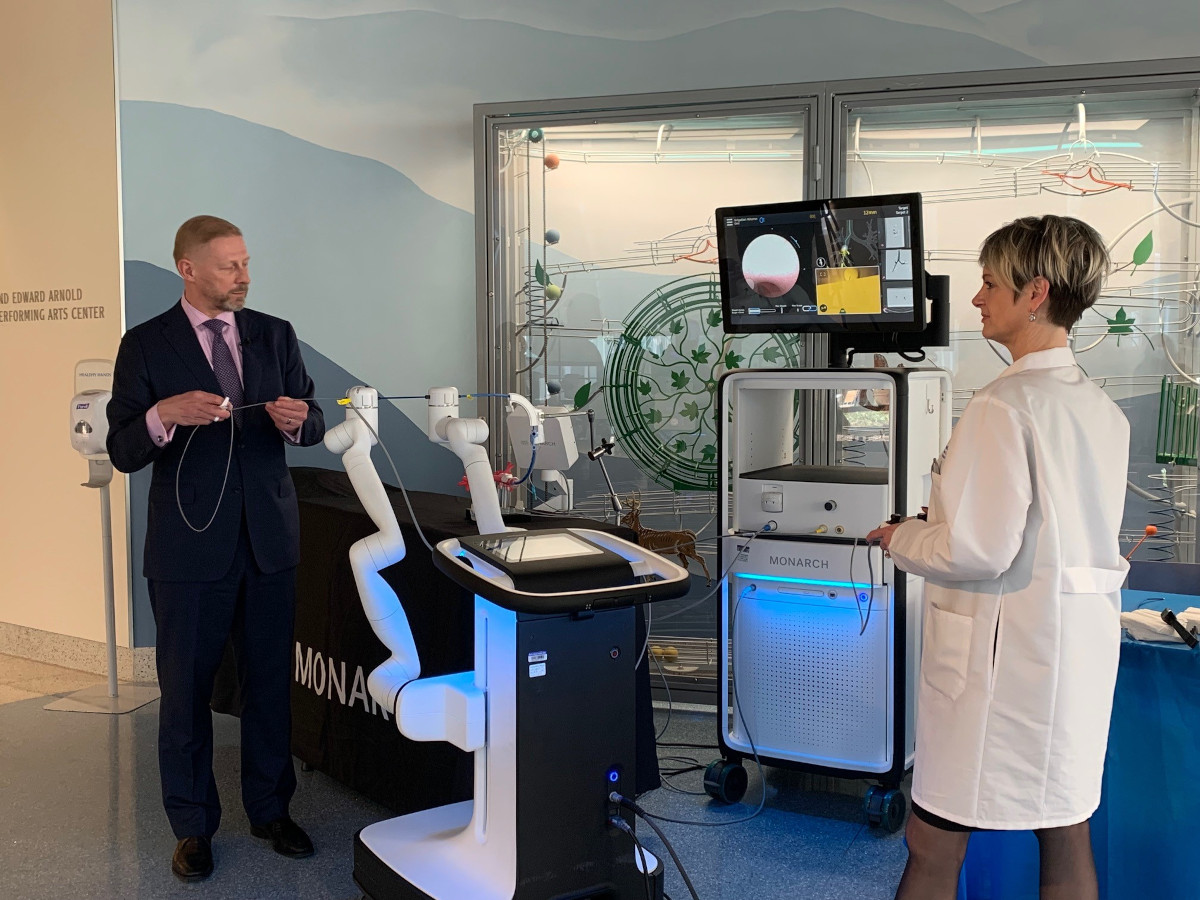Penn State Cancer Institute now using robot to detect lung cancer earlier

Penn State Cancer Institute is now using a robot-assisted bronchoscopy system that can diagnose lung cancer at its earliest stages. The Monarch Platform robot-assisted bronchoscopy is a minimally invasive procedure that is able to reach small nodules better than traditional methods and can lead to earlier diagnosis of lung nodules.
The Monarch Platform, developed by Auris Health, is the first commercial robotic platform for therapeutic and diagnostic bronchoscopic procedures. Its design allows physicians to diagnose small peripheral lung nodules that are typically hard to reach through regular bronchoscopy. Accurately accessing and diagnosing lung nodules enables physicians to perform earlier biopsies to diagnose and treat lung cancer faster.
“Lung cancer is the leading cause of cancer deaths, and we know earlier diagnoses are critical to improving outcomes,” said Dr. Jennifer Toth, director of Interventional Pulmonology at Penn State Cancer Institute. “The ability to detect lung cancer at its earliest stages and begin treatment as soon as possible will save lives, and we are excited to do that with the Monarch technology.”
The Monarch Platform combines traditional camera views inside the lung with computer-assisted navigation based on 3D models of the patient’s own lung anatomy. This is the first tool to offer pulmonologists and thoracic surgeons both direct visualization of the lung and software to guide the scope to a small lesion.
The Cancer Institute is the second Penn State Health facility to utilize the Monarch Platform, joining pulmonologists at Penn State Health Hampden Medical Center, who began using the technology last year. More information on care for lung and respiratory disease at Penn State Health is available here.
If you're having trouble accessing this content, or would like it in another format, please email Penn State Health Marketing & Communications.
